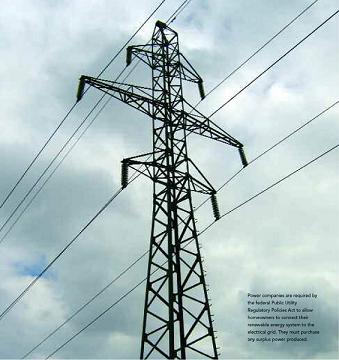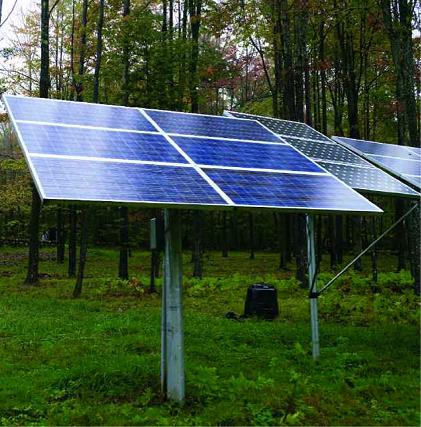
Financing, Incentives, Rebates, and Tax Credits
There has never been a better time to invest in renewable energy. One of the greatest forces behind the burgeoning popularity of green power is the availability of liberal financial incentives. As a matter of fact, incentives now equal more than $3 billion for household sustainable energy systems. In many states, rebate programs refund more than half of the homeowner’s cost. Additionally, several states offer tax credits, exemptions, and low-interest loans to sweeten the deal.
Financing
As we have shown previously, renewable energy systems often require a sizeable capital investment. Thankfully, if a homeowner does not wish to pay for their renewable home energy system out of pocket, there are now a host of financing alternatives for green energy that were not available just a few short years ago. Your renewable energy retailer can be an incredibly valuable resource in discovering financing options available in your state and which are the most appropriate for you. By financing your renewable energy system, you can spread the cost over many years, and the interest payments are often deductible. Typical financing options include unsecured loans, home equity loans, and home refinancing. Consult your financial institution about these options, and see the resources section at the end of this book for more information.
Installing renewable energy systems on a home can provide considerable tax advantages. The Energy Policy Act provides a 30 percent federal tax credit of up to $2,000 for residential photovoltaic and solar domestic hot water equipment.
A Final Word on System Costs
Without a doubt, the question we get more than any other at USA Solar Store is “What does a solar-electric system cost for an average home?” Justifiably, our potential customers want a ballpark price of our solar, wind, and micro-hydro systems so they can judge whether they feel it is worth it or simply whether they can afford it. Often, they will go away for a year or more and come back when they have made up their mind or saved up the money, and we respect that. Unfortunately, we are often unable to give a simple answer to that question because there are so many factors involved.
As stated before, the average American home uses 800 to 1,000 kilowatt hours of electricity every month. However, estimating system costs solely on that figure alone might produce a misleading answer. Power consumption often varies significantly, depending on the time of year, the age and type of appliances used most, and your lifestyle habits in general. At the risk of sounding too repetitive, follow the advice in the Energy Conservation chapter because this information will greatly influence the amount you will end up spending on a renewable energy system. Again, every dollar spent on improving energy efficiency lowers the system cost fourfold. Adding to the complexity of determining cost is the tremendous difference between the square footage of homes (and how much is actually used) and personal energy consumption throughout the different stages of life and among occupants.
Net Metering
According to the federal Public Utility Regulatory Policies Act, power companies must allow you to connect your electrical energy system to the grid, and they are also obliged to purchase any surplus power you produce net of what you consume. In about three dozen states, renewable energy system owners profit from regulations governing net meter reading. In essence, the homeowner is charged for the electricity bought from the power company, minus the electricity generated by their renewable energy system. The meter spins forward as normal when energy flows from the grid into the home and backward when current flows from the building to the utility. With a net metering agreement, the homeowner is compensated at the retail electricity rate for kilowatt-hours of sustainable electricity transmitted to the utility. Net metering benefits are particularly important in regions with high electric rates. The local power company and the community in general benefit from reduced demand and the periods of peak demand, such as midday in summer, when renewable energy systems are at their most productive. In addition, many utilities also sell or trade energy credits based on their customers’ production of power.
In net metering, the homeowner is charged for the electricity bought from the power company minus the electricity generated by their renewable energy system. The meter spins forward, as usual, when energy flows from the grid into the home, and backward when current flows from the building to the utility.

Net metering differs state to state and among utilities, but all net metering programs must detail their method of determining “net excess generation”—how the customer is compensated for electricity and the time period allowed to take the credit. If your net metering agreement measures net excess generation monthly, you may receive credit for the excess energy produced in that month only. A better deal is if your net metering regulations permit annual net excess generation in which the credit can be banked in your account for a year.
When a local utility does not have net metering, it usually requires the homeowner to install two meters: one to gauge the power you are taking from them and another to calculate the electricity you are sending out to the grid. Under these circumstances, the power company pays only the wholesale rate for the electricity you provide to them. This less-than-ideal arrangement should be taken into account when designing your system to avoid generating too much extra power or having to buy too much from the utility.

Power companies are required by the federal Public Utility Regulatory Policies Act to allow homeowners to connect their renewable energy system to the electrical grid. They must purchase any surplus power produced.
Rebates and State Tax Credits
There are many states and even some power companies offering credits that can offset much of the cost for your solar array and components. These rebates or tax credits can aid in reducing system cost, but don’t be tempted to buy a renewable energy system just to get these credits as many did in the 1970s—it is no longer worth it for those reasons alone. Most residential solar rebate programs are capped at a specific dollar amount, often equaling about 20 to 30 percent of per-watt cost. Tax incentives often feature a sales tax exemption for renewable energy systems, property tax exemptions, or state income tax credits, providing homeowners with a greatly reduced up-front cost. The National Database of State Incentives for Renewable Energy, listed in the resources section, features information on virtually every renewable energy incentive.
Solar Financing Options
As with any major home improvement, you can often finance a solar system with a home equity loan, which is generally repayable over a ten- to fifteen-year period and have interest rates much lower than many other types of loans. With a new home, you can simply fold the cost of a solar system into your mortgage. If you are purchasing or refinancing your house with an FHA loan, you can often increase that loan by 20 percent if the home has or will have a solar system. Many states, towns, and even some PV dealers also have attractive loan programs, so shop around.
Federal Solar Tax Credit
In 2005, the Energy Policy Act established a 30 percent federal tax credit of up to $2,000 for purchasing and installing residential PV and solar domestic hot water equipment. Nearly all expenses, including labor for site preparation, assembly, and original installation, as well as for pipes and wires to connect the system to the home, are allowable. The system only has to be sited at a residence occupied by the taxpayer. This credit is subtracted from any federal taxes you owe, and as a credit, any excess comes back to you as a refund. Eligibility requirements state that components must be placed in service before December 31, 2008, but this has been extended in the past and likely will be again.
